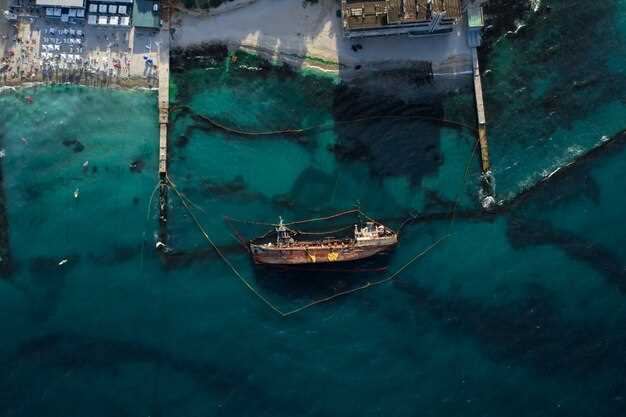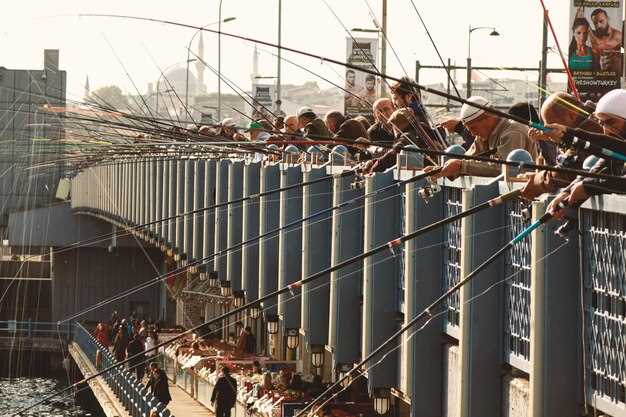
Adopt a six- to twelve-month liquidity reserve and formalize alternate carrier agreements across multiple regional hubs to guarantee cargo continuity when a dominant operator falters. Build a cross-functional runbook with triggers and pre-approved contingency budgets to continue operations even if a single operator experiences liquidity stress. This transformation underscores the role of stakeholders and risk governance in preserving safety and continuity.
Analysis of hanjins shows how family-run models can face liquidity shocks that trigger liquidation, revealing vulnerabilities in cash buffers and access to alternative slots. Such gaps stressed networks, leaving cargo stranded or delayed for months, underscoring need for risk sharing among suppliers, lenders, port authorities, and regulators.
Their position within global chain underscores fragility of single-source dependencies; stakeholders across shippers, forwarders, ports, lenders, and regulators must align around shared safety standards and risk dashboards to avoid repeat disruptions. A warning sign appears as rising ballast costs, volatility in freight rates, and port congestion reverberate across lanes.
Specific steps include: 1) diversify capacity by adding at least three alternative carriers per lane; 2) implement a formal time-bound plan with cash-flow guardrails; 3) apply a chain-wide safety standard; 4) install a monthly dashboard that flags warning signs and quantifies exposure. Biggest risk remains cash-flow disruption; governance must prioritize action.
sorbo notes that best protection lies in collaborative leadership and proactive risk management; their framework maps how disruption in one node cascades through chain, eroding trust among customers and partners. This help to stakeholders comes from enabling standardized data sharing, cross-border coordination, and a guaranteed escalation framework.
In coming months, regulators and industry groups should adopt a shared risk protocol that recognizes value of diversification, digitalization, and safety-first culture. Organizations with limited balance sheets should explore non-dilutive financing, joint ventures, and mutual support arrangements to spread risk; such steps prove valuable to all stakeholders and help stabilize global seaborne commerce.
Practical applications of real-time market intelligence after Hanjin
Recommendation: Establish a dedicated real-time market intelligence unit to monitor data streams on market rates, vessel utilization, liquidity, debt, and port congestion, with warning signals. This unit enables rapid decisions that turn risk into stability, while staying adaptable to changing conditions. Data-driven processes are turning insights into action within hours.
Data streams combine AIS positions, port calls, bunker costs, freight rates, and credit-market signals. Time to decide reduces from days to hours, cutting bankrupt risk and strengthening liquidity buffers. While volatility spikes, nations align policy, staying power grows as investors and operators pursue alternative funding and flexible sale options overseas. Innovation-driven analytics transform evolving patterns into actionable thresholds, enabling rapid margin protection and risk reversal. Over time, data quality improves. Regulators declared readiness to back facilities.
Thought leaders emphasize scenario diversity: from gradual growth to suddenly emerging shocks, so decisions remain robust under changing conditions. Market visibility serves lenders with guaranteed data-backed assurances, boosting coordination among nations, overseas partners, and regional regulators.
| Индикатор | Действие | Воздействие |
|---|---|---|
| Liquidity gap | Activate standby facilities; rotate credit lines | Preserved operations; higher resilience |
| Debt load | Extend maturities; restructure where feasible | Lower bankrupt risk |
| Market volatility | Hedge via diversified routes; adjust pricing | Stability amid shocks |
| Cargo demand shifts | Reroute capacity; adjust vessel mix | Maintains service levels |
| Sale opportunities | Pre-arranged bids; overseas auctions | Revenue recovery potential |
Identify leading indicators from freight rates and port congestion in real time
Recommendation: deploy real-time analytics cockpit with automated alerts triggered by freight-rate spikes and port-entry bottlenecks, using a 15-minute refresh cycle.
Data sources include rate indices, AIS vessel positions, port authority feeds, terminal operation systems, and claims from involved carriers.
Most firms benefit when stakeholders act quickly; involved companys become able to mitigate risk through proactive signals.
- Freight-rate momentum and volatility: Track rate index across top lanes; compute day-over-day percent change, 7-day moving average, 30-day volatility; trigger warning if a 24-hour swing ≥20% or 7-day volatility exceeds historical norms.
- Cross-lane spreads: Monitor differential between lanes; widening spreads signal demand shifts and potential multi-month price swings.
- Capacity pressure signals: Assess slot availability, container yard occupancy, crane productivity, and gate cycle times; alert when capacity utilization passes preset thresholds.
- Port congestion proxies: Observe berth occupancy, average berthing delay, yard dwell hours, and queue lengths at gates.
- Vessel reliability and schedule discipline: Measure schedule slippage, late arrivals, and berth delays; rising delays correlate with rate volatility.
- Market consolidation indicators: Track carrier capacity shares and entry/exit signals; like top-3 concentration patterns, higher concentration raises risk of abrupt price moves.
- Financial stress and claims signals: Monitor liquidity indicators, rising claims, and potential liquidation risk; government-funded support may appear during stress, requiring rapid policy communication.
- Multi-month pattern validation: Compare current signals against multi-month trends to separate noise from structural shifts.
- Alternative routing uptake: Quantify use of alternative routes or new liner services; increasing reliance implies evolving risk appetite among stakeholders.
- Warning and governance triggers: When thresholds breach, notify stakeholders including president and board; initiate contingency actions and finance coordination during longer disruptions.
Implementation steps
- Phase 1: integrate data feeds from rate indices, AIS, port systems, and finance records; ensure data quality and time-syncing.
- Phase 2: calibrate thresholds using backtesting across months of historical data; establish escalation paths involving companys and partners.
- Phase 3: deploy automated alerts to dashboards accessed by executives, operators, and risk managers; run drills quarterly.
Monitor vessel utilization, capacity gaps, and service level shifts

Immediate action: launch real-time utilization dashboards mapping teus by vessel, lane, and port pair; identify capacity gaps within 24 hours; adjust loads, swap equipment, and reallocate yard slots to boost capacity and service reliability.
Track on-time performance, loading windows, and cut-off times; document service shifts across lines; escalate underperforming routes through governance rounds to preserve market confidence.
Backtest plans with changing data, august signals, and time-sensitive metrics; model scenarios across longer voyages, congested ports, and capacity gaps; align fleet deployment to minimize idle capacity.
Establish visibility by involving involved parties: shippers, carriers, ports, and brokers; create collaboration to withstand crisis and preserve liquidity.
Strengthen capital discipline: sale of non-core vessels, lease-back options, and debt rescheduling; preserve liquidity, maintain access to capital, tapping a billion in market value, and keep largest customers with predictable service.
Augment governance with market quotation and court scrutiny; monitor claims, verify data integrity, and address issues promptly to sustain trust and competitive stance.
Detect distress signals: liquidity stress, charter rate spikes, and creditor warnings

Implement a liquidity alert platform that watches accounts, flags gaps, and triggers contingency actions before disruptions escalate.
Decisions hinge on timely sensing of distress signals, which includes liquidity stress, charter rate spikes, creditor warnings, foretelling funding pressure.
Build a cross-functional data loop linking ocean itineraries, finance metrics, and platform quotation to quantify risk and drive responses.
To sustain family-run operations, strengthen relationships with creditors and suppliers, sharing transparent accounts, clear fees, and pre-approved contingency terms that support navigating longer cycles and competitive markets.
A president-led unit within koreas-based operators should adopt these checks; kjaedegaard notes that such steps help nations diversify risk beyond start-up peers and low-cost regions.
Monitor creditor warnings as early cues; store quotation histories, plan broader finance options, and prepare responses that keep liquidity safety margins intact while avoiding court actions.
Source and validate data: build a reliable real-time dashboard for stakeholders
Recommendation: Establish a single source of truth by integrating feeds from port authorities, vessel operators, forwarders, and customs, and apply strict provenance, timestamping, and reconciliation rules to guarantee a reliable real-time dashboard.
Validate data in three layers: origin integrity checks, cross-source reconciliation, and anomaly detection with defined thresholds. Without rigorous validation, insights would erode, warning signals would become unreliable, and everyone would rely on guesswork, ever increasing risk.
Signals must span vast datasets: port occupancy, crane throughput, feeder schedules, AIS traces, customs declarations, and macro indicators. economy signals tie debt and liquidity to shipments, and when that link is solid, forwarders see consolidation risks ahead, which the dashboard should highlight in time.
Governance should blend government, private partners, and sector associations to sustain data quality, privacy, and access. government-funded streams provide baseline coverage, and theyve proven effective when aligned with nations’ policy priorities.
Visualization should prioritize drill-down by region, route, month, and operator, with clear risk scores, trends, and a warning badge when thresholds are exceeded. Insights gained support decision-making across stakeholders, from forwarders to regulators, and will help everyone plan away from blind spots around downturns.
Make latency a KPI: streaming pipelines, in-memory caches, and pre-aggregation to keep time-to-insight under minutes. This helps avoid delays that would erode competitiveness over time and enables optimization to protect cash flow and assets.
History from hanjins demonstrates how fragmented data blunted warning signals. A unified data fabric would have reached protection sooner and reduced debt exposure during the downturn that followed, preserving the economy across nations.
Monthly reviews with government-funded agencies and private partners will help reach continuous improvement. they will prioritize data sources that reach core signals, and allocate scarce resources to ensure resilience against external shocks, even when conditions tighten.
Actionable playbooks for shippers, lenders, and regulators in a downturn
Lock liquidity now: build a six‑month cash plan, trim nonessential capex, extend supplier terms, and secure standby facilities to cover accounts payable. This long, targeted move would reduce risk of sudden disruptions. thought leaders at consultancy groups and company finance teams reached consensus that cash discipline enables most operations to ride out months of stress with minimal collateral damage, boosting efficiency across processes.
Shipper play: tighten booking discipline, lock in core cargo with long‑term commitments, and build a file of approved lanes; sign off on deviations with clear thresholds. This reduces volatility, improves throughput, and preserves ships and port productivity even when disruptions rise.
Lender play: tighten risk grading, build reserve funds, and tailor covenants to actual performance; mandate early warning signals and steady reporting from accounts. A robust fund line, supported by deep knowledge, helps absorb shocks and enables ongoing operations of most ships.
Regulator plan: publish risk dashboards, require stress tests using historical scenarios, and align with a culture of transparency among participants facing ongoing stress. Sharing insights via notes from history helps everyone adjust quickly, reducing systemic damage.
hanjins experience showed disruptions reached across months, with samsungs‑backed fleets and partner accounts feeling pressure. Cultural consultancy input helps executives sign off on decisions enabling everyone to keep ships moving. This history underscores that rapid booking adjustments and broad collaboration going forward kept ships going despite strain.

